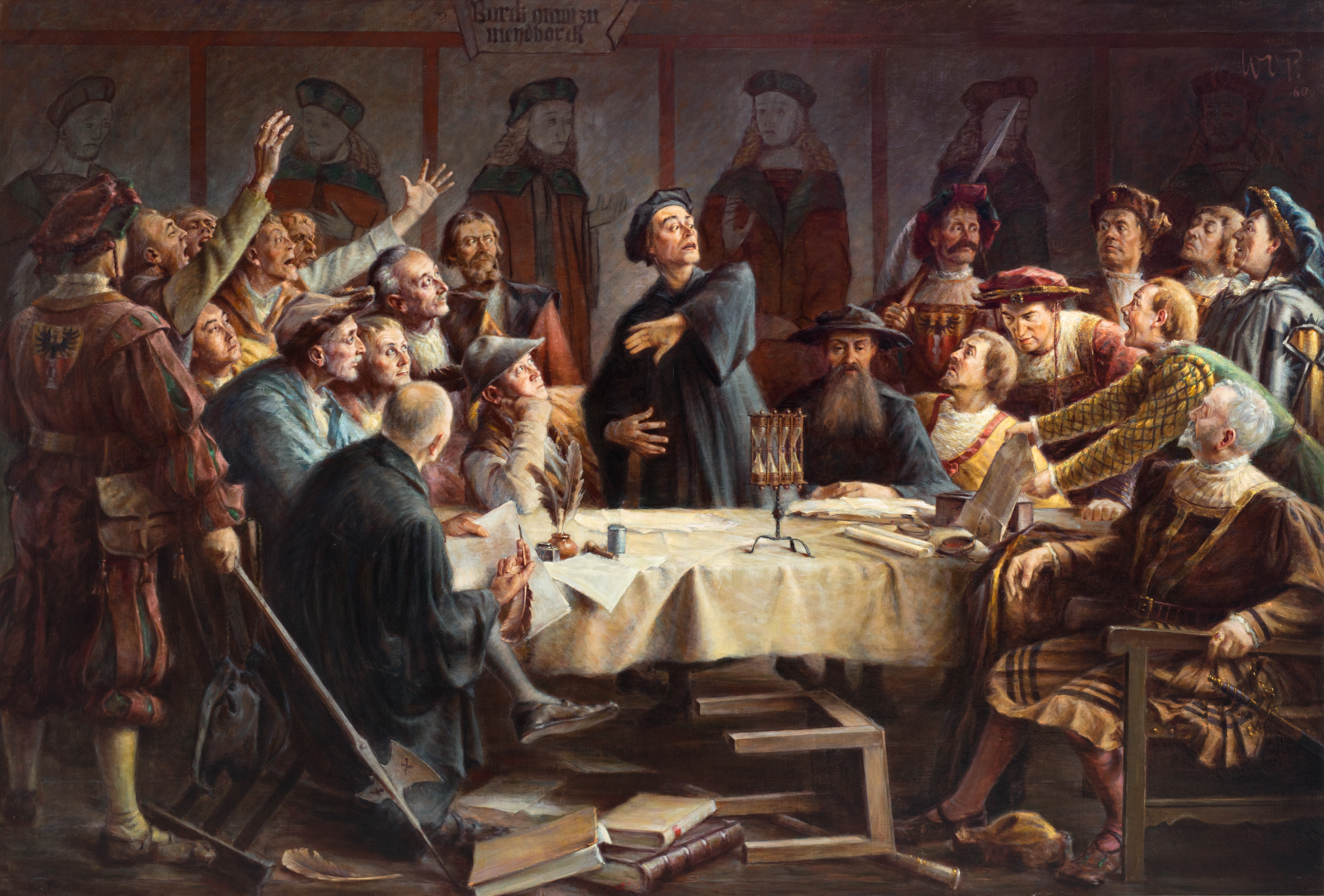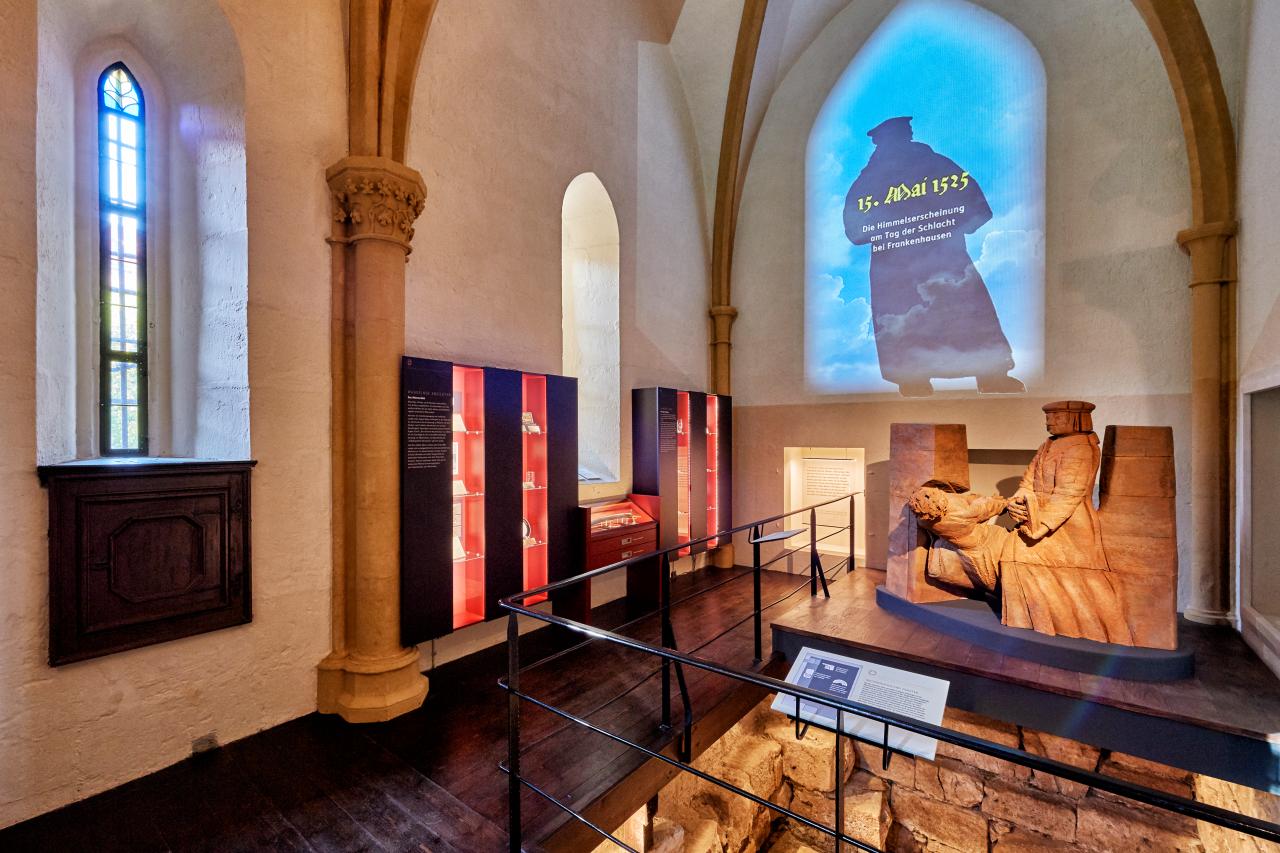
Thomas Müntzer (1489-1525)
The Revolutionary
What did the good Thomas do to leave such an image in people’s minds? Good question! At the beginning of his “rebellion”, he was even a supporter of Martin Luther; towards the end, however, he distanced himself from him. What happened?
Starting from the beginning? Thomas Müntzer was born in Stolberg in the Harz mountains in 1489. Before going to the University of Leipzig in 1506 and later to Frankfurt an der Oder, he lived in Quedlinburg. Müntzer was ordained as a priest in the Diocese of Halberstadt and then worked at St. Michael’s Church in Brunswick. Therefore, we can see that both men – Müntzer and Luther – came from the bosom of the church, both travelled through the history-steeped region of Thuringia and both fell in love with runaway nuns.
In around 1524, after settling in Allstedt with his wife, Müntzer worked on reforming the liturgy, with the goal of introducing the German language at the mass. At the same time, he led the “Allstedt League”, an armed alliance of peasants, miners and tradesmen. Müntzer lost his employment in Allstedt when he gave the “Sermon before the Princes” before the future Elector John the Steadfast and his son, later John Frederick I., on 13 July 1524. In it, he called upon the princes not to resist the Reformation, and also attacked social injustices.

View of the exhibition "Thomas Müntzer - Facts and Fictions" in the Museum St. Marien ©Florian Trykowski, Thüringer Tourismus GmbH
In 1525, Thomas Müntzer was elected as the priest of St. Mary’s Church in Mühlhausen, where he sided with the peasants and became a leading figure in the Peasants’ Revolt.
This is where Luther’s and Müntzer’s views diverged – Müntzer directed his resistance not only against the religious authorities, but also against the world order. Unfortunately, this did not end well for him. After a fatal battle near Bad Frankenhausen, Müntzer was captured, tortured and hanged.
The Thuringian State Exhibition 2025 invites you to explore the theme of "freiheyt 1525. 500 years of the Peasants' War" and immerse yourself in a fascinating era of uprising and the longing for freedom. Under the leadership of Thomas Müntzer, the peasants of the 16th century courageously stood up for their rights. The captivating stories and courageous voices of this time continue to inspire and shape our idea of freedom to this day. ©Sebastian Köpcke, MühlhäuserMuseen
Header: ©Tino Sieland, Wirtschaftsbetriebe Mühlhausen GmbH







